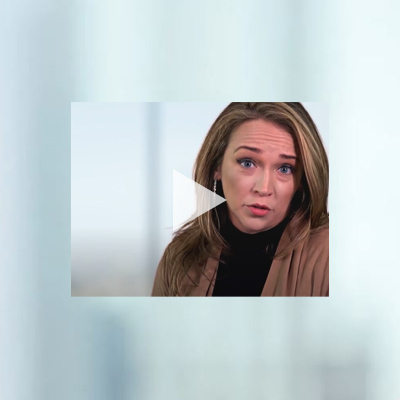The other day, I crossed town during rush hour traffic with 3 small, screaming children after a long day at work to visit my doctor. We sat for over an hour in the waiting room only to be seen by the doctor for less than 15 minutes. I left the appointment beyond frustrated with my short time with the doctor and felt as though I had wasted my time.
The fee-for-service payment model incentivizes healthcare organizations to see as many patients as possible in a given amount of time, and, as a result, physicians often have a mere 15 minutes to diagnose a condition, recommend a treatment, and answer patient questions. In fact, it is very likely that physicians are completing these tasks in less than 15 minutes; one study showed that 52.9% of the time, physicians are talking to or examining their patients and competing paperwork the other 37% of the time.]
But scientific advances coupled with an aging population in which individuals typically have multiple comorbidities have significantly increased the complexity of care. For example, my mother-in-law now takes approximately 6 different pills each day for hyperthyroidism, rheumatoid arthritis, and atrial fibrillation and visits 4 different specialists on a regular basis. According to the US National Medical Expenditure Panel Survey, the number of people with a chronic illness is expected to reach 171 million by the year 2030, with almost one-half of those expected to have multiple chronic conditions. Thus, a 15-minute appointment with an individual with complex chronic conditions will provide little time to adequately diagnose, treat, and educate.
It comes as no surprise that patients are frustrated with this type of “quick” care. But it’s not only the patients who are complaining. While working with doctors to develop educational activities, I’ve realized that doctors, themselves, are frustrated as well. In fact, in a survey of more than 1,000 physicians, 6 out of 10 agreed with the statement “my visits with patients are often too short for me to answer their questions and treat them effectively.”
Although reimbursement systems are moving towards value-based payment models, which might afford physicians more time with patients, it seems that movement is slow. In 2016, value-based payment arrangements represented a small portion of physician compensation.
Until then, here are some steps that clinicians can take to make the most of their time with patients:
- Complete chart prep before appointments
- Delegate various tasks to medical assistants/staff such as lab work, vaccines, and documentation
- Prepare toolkits for common chronic diseases to help maximize patient communication (eg, compile patient resources and information on type 2 diabetes mellitus to review during the appointment)
- Schedule a follow-up appointment for some of the more complicated patient cases so that there will be more time to discuss any results and the next steps of care
- Schedule more time for an appointment with general complaints such as fatigue and weight loss because this will likely consume more time than, for example, an appointment for a sore throat or earache
- Use technology to increase patient‒clinician communication such as patient portals, or HIPAA-compliant apps for texting or emailing patients
- To show they’re really listening, clinicians should maintain eye contact with patients and not type on the computer during the conversation
I’d love to hear from you. What have you or your organization done to help optimize time with patients?












9 Comments to Delivering Great Patient Care in 15 Minutes (or Less). Is It Possible?
I realize that my time, with my doctors of which I have many, is limited. Since I have many chronic issues that sometimes become acute,I have started bringing typed summaries to my doctors appointments. I give one to my doctor and I use the other to remind me of my talking points. My primary doctor thinks this is helpful. I have also started using the patient portal to update my primary doctor on what happens at my specialist visits.
My doctors also use scribes so they can talk with me and not me so focused on the computer.
My doctors also use scribes so they can talk with me and not me so focused on the computer.
Not enough time to first talk with patient and then write on the computer. Also, because charts are password coded, difficult to delegate a lot of stuff to medical assistants.
Keep a voice recorder in the exam room. Let it record everything. Doctor can just have a conversation with the patient. Then let the staff put the information on to the EMR. Will that work?
Most of those tips are either unrealistic such as scedule more time or have the pt come back “why do I have to come back? I spent 50 dollars on a copay and I expect all my problems to be fixed now”. Eye contact is fine, but it doesnt do squat to get things done in a 15 minutes or less.we chart prep and delegate all day long. Doesn’t help when you have15 minute slots, pt shows up late, and have a shopping list of complicated problems.
Sorry, but the intentions are nice, but not realistic nor very helpful in the real world of managed 15 minutes care
I agree. Putting the burden on the patient to return for the 2nd time and pay another fee, just because the doctor can not complete the task in 15 minutes. Who decided on 15 minutes anyway?
From a business point of view, the GOVERNMENT has de facto and the insurance cabals have created a model in which to survive financially one must maximize throughput with quality not an important issue. There are increasing financial constraints to implementing the suggestions since the’re is no remuneration for the suggested services because they are not perceived by the Govt or the Insurance Industry as having intrinsic value. They are good ideas, but in a tight practice who can afford the added personnel expense and the cost of the information programs suggested.??? Where does the money come from here??? The answer is out of the practice for no fiscal gain and a net loss of take home pay for the physician!!!!!
its all about the pocket book of Corportaion, INsurance company and the Government, isnt it? Who cares about the financial burden for the patient?